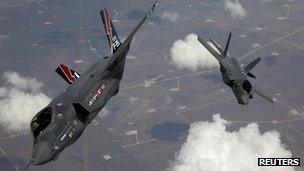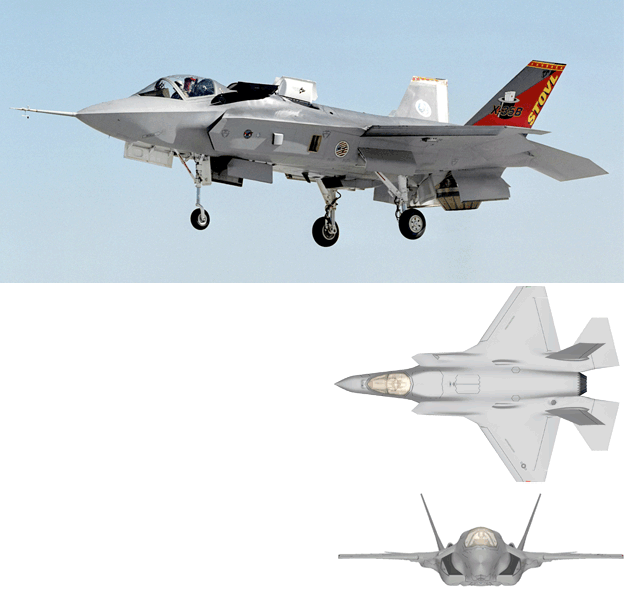Joint strike fighter decision was flawed, MPs say
- Published

The handling of the decision over the Joint Strike Fighter attracted criticism from MPs
MPs have accused the Ministry of Defence of making a "rushed and flawed" decision to switch fighter aircraft for the Royal Navy's new carriers.
The defence committee said the 2010 decision to opt for the carrier variant of the joint strike fighter, rather than the jump jet, had been a mistake.
Chairman James Arbuthnot said millions of pounds was wasted and delays caused.
But ministers said the decision, which was reversed back to jump jets last May, had been "right at the time".
'Learn lessons'
The previous Labour government had placed orders for two new aircraft carriers to be equipped with the F-35B variant of the American built joint strike fighter (JSF), which is capable of short take-off and vertical landing.
But the coalition announced in the 2010 Strategic Defence and Security Review, external that it favoured the F-35C version, which has a longer range and can carry more weapons.
The decision came amid fears the costs of fitting necessary equipment were spiralling out of control.
The Commons defence committee said it was clear the government's decision to change the variant of fighter jet for the UK's new carriers had been "rushed and based upon incomplete and inaccurate policy development".
The decision had been taken "without the MoD understanding how the change could be implemented", the committee said.
Its chairman, the Conservative MP James Arbuthnot, described it as a "bit of a shambles" and said it was "not the way the MoD should be making decisions".
"[It] was a mistake which cost many millions of pounds and caused a lot of upset and delay and concern and it's not a mistake that should happen again - it's a mistake from which lessons should be learned," he said.
The committee's report also recommended the MoD should spend more on defence science and technology, and research and development.
Otherwise, it warned, the emphasis on cheaper "off-the-shelf procurement" from other nations could come to threaten the UK's ability to defend itself.
Defence Equipment Minister Philip Dunne said the MoD's newly published 10-year £160bn equipment plan would ensure that the armed forces had the hardware they needed in the coming years.
'Confidence blow'
He said: "The increased financial contingency will help cover future risk and make our equipment programme affordable. There is also greater information for industry about our priorities, helping them to invest in the future capabilities our troops need."
James Arbuthnot MP: Decisions need to be more ballanced and informed
The minister also said the switch to the carrier variant of the F35 had been "right at the time", but that "unacceptable cost growth, technical risk and project delays" meant the decision to revert to the jump jet was "in the best interest of defence".
Shadow defence secretary Jim Murphy said the wasted time and money had led to a serious capability gap, and meant the UK had paid at least an extra £100m to have no aircraft to fly from the carrier for years.
Mr Murphy said the report was "another blow to the country's confidence in the government's competence on defence".

F-35B STOVL
Short Take Off Vertical LandingCost per aircraft: £65.5m*
Combat range: 1,667km (900nm)
Selected: Trials by 2018
F-35C Carrier Variant
Hook wire landing systemCost per aircraft: £59.9m*
Extra cost to adapt carrier: £2bn
Combat range: 2,200km (1,200nm)
Rejected: Due to carrier conversion costs
- Published5 February 2013
- Published10 May 2012
- Published26 April 2012